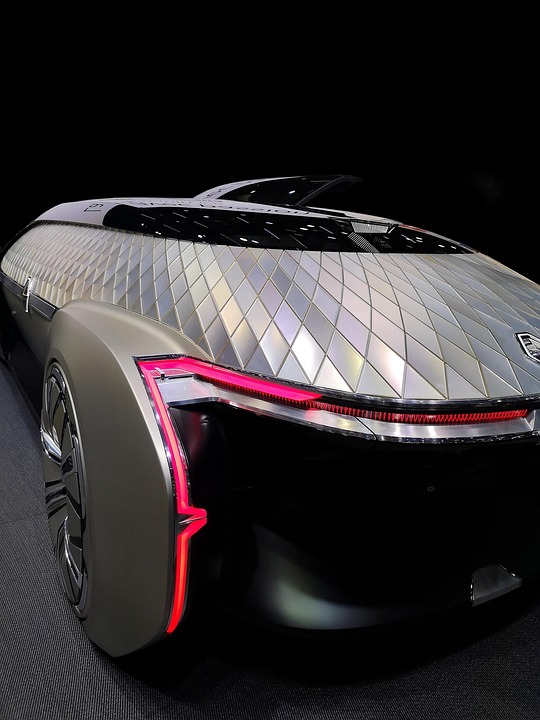From Sketch to Reality: The Journey of Iconic Concept Cars
The allure of concept cars holds a unique place in the hearts of automotive enthusiasts and collectors alike. These vehicles, often showcased at international auto shows, encapsulate the dreams and aspirations of car manufacturers—a breathtaking blend of engineering prowess and artistic design. From their initial sketches to their final production, the journey of concept cars is filled with innovation, risk, and, at times, disappointment. Let’s delve deeper into the fascinating evolution of these automotive masterpieces.
What Are Concept Cars?
Concept cars are experimental vehicles created to showcase new technologies and design approaches that manufacturers envision for future models. Unlike production cars, which aim for practicality and mass-market appeal, concept cars often emphasize bold designs and cutting-edge technology, providing a glimpse into what might be on the road in the years to come.
Role of Concept Cars in the Automotive Industry
-
Innovative Design: Concept cars push the boundaries of automotive design. They experiment with shapes, materials, and layouts that defy conventional car aesthetics.
-
Technological Advancement: Many technologies, such as electric propulsion and advanced safety features, have their origins in concept cars. They serve as testing grounds for breakthroughs that ultimately shape mainstream vehicles.
- Market Feedback: Auto manufacturers gather invaluable customer feedback through concept cars, allowing them to gauge public reaction before committing to a full-scale production.
The Process: From Sketch to Prototype
The journey of a concept car is often exciting and intricate:
-
Initial Concept and Design: The process begins with sketches and computer-generated designs by talented automotive designers. Renowned automotive companies like BMW, Ford, and Ferrari invest considerable resources in brainstorming sessions that often draw inspiration from art, nature, and even architecture. For instance, the iconic BMW i8 was born from a vision of a sustainable sports car, blending aesthetics with ecological responsibility.
-
Model Creation: Once the design is finalized, a scale model is constructed, which allows for a tangible examination of form and proportions. This phase often includes extensive collaboration between designers and engineers to ensure feasibility.
-
Prototype Development: The next step involves building a functioning prototype. This phase tests the vehicle’s performance, aerodynamics, and safety features. For instance, the Tesla Roadster, initially presented as a concept, went through rigorous testing before its production launch in 2008.
- Public Reveal: After the prototype shows promise, automakers unveil it at major auto shows, sparking excitement and speculation about future designs.
Current Trends in Concept Cars
According to a report by MarketsandMarkets, the global electric vehicle (EV) market, which heavily influences the development of concept cars, is projected to grow from $163 billion in 2020 to $803 billion by 2027, signaling a shift towards sustainable and innovative vehicle designs. This has led many automakers to prioritize electric and hybrid concepts, such as Ford’s all-electric F-150 Lightning.
Notable Examples of Iconic Concept Cars
An outstanding illustration of a significant leap from concept designs to reality is the Aston Martin Valkyrie. Initially presented as a radical hypercar concept, it has evolved into a stunning production model that marries performance with luxury. This car challenges notions of speed and agility, demonstrating the effective translation of visionary design into a market-ready vehicle.
Another prominent example is the Toyota LQ Concept, which aims to redefine the driver experience. Hibiki, one of its AI-powered functions, interacts with drivers to create a personalized driving experience, showcasing how advanced technology can significantly change the way we drive.
Challenges in Bringing Concept Cars to Life
While the journey from sketch to the showroom is thrilling, it is not without challenges:
-
Production Viability: Many concept cars never make it into production due to high costs, impractical designs, or technological limitations. For instance, the Lamborghini Estoque, envisioned as a four-door sedan, garnered excitement at its reveal but ultimately was shelved.
- Shifting Market Trends: Changing consumer preferences can lead automakers to pivot away from their initial visions. The rise of eco-conscious consumers has forced carmakers to adapt and innovate in ways that align with market demands for sustainability.
Conclusion
Concept cars exemplify the automotive industry’s creativity and innovation, acting as both a crystal ball for future design and a testing ground for groundbreaking technologies. They ignite the passions of car enthusiasts and lay the groundwork for the vehicles of tomorrow. While not all concept cars reach production, the ideas they foster continue to influence the automotive landscape profoundly.
For more insightful articles on the latest developments in the automotive industry, check out these links on Buzzo.live:
Additionally, explore the International Automobile Manufacturers Association (IAMAI) for more statistics and reports on automotive trends.
In the world of concept cars, the only constant is change, and that makes the journey from sketch to reality a truly exhilarating experience.


